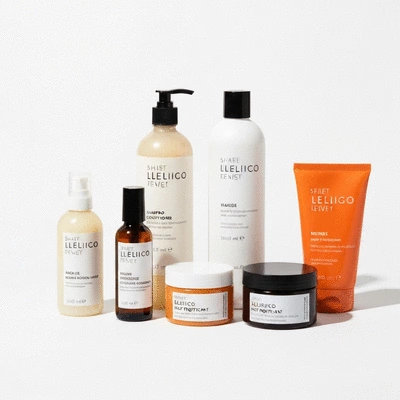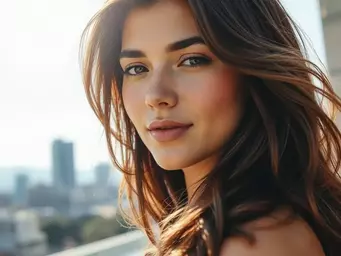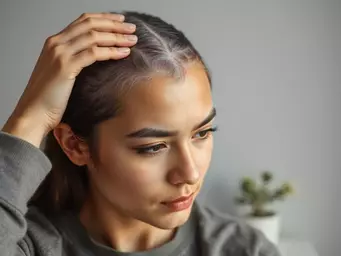Shield Your Hair from Damage
Did you know that environmental factors can significantly influence your hair health just as much as genetics and hair care products? Understanding these threats is crucial to maintaining luscious locks. Here are key insights to help you protect your hair from damaging elements.
What You Will Learn
- UV rays can weaken your hair, leading to dryness and discoloration; using UV protection is essential.
- Pollution can cause scalp issues and hair loss; detoxifying shampoos and protective serums can help.
- Excessive heat styling leads to dryness and breakage; utilizing heat protectants and lower heat settings is advisable.
- Indoor and outdoor pollution affects hair follicles; regular cleaning and air purifiers can minimize damage.
- Personalizing your hair care routine based on environmental challenges is key to maintaining healthy hair.
Environmental Threats to Hair Health: Impact and Protection
This visual illustrates the primary environmental threats to hair and effective protection strategies.
Environmental Threats
- • UV Rays: Dryness, discoloration, dullness, weakened structure.
- • Pollution: Dandruff, irritation, hair loss, buildup.
- • Heat Styling: Dryness, breakage, follicle damage.
- • Indoor Pollutants: Scalp issues, dust, pet dander.
Protection Strategies
- ✔ UV Protection: Hair products with UV filters, hats.
- ✔ Anti-Pollution: Detoxifying shampoos, protective serums.
- ✔ Heat Protection: Heat protectant sprays, lower temp settings.
- ✔ Personalized Care: Tailored routine, hair type considerations.
Key Ingredients & Practices
- • Daily UV Filters
- • Detoxifying Agents (clay, charcoal)
- • Heat Protectant Sprays
- • Antioxidants (Vitamin C & E)
- • Protective Hairstyles
Nutritional Support
- Biotin: Supports hair growth and strength.
- Omega-3 Fatty Acids: Nourishes follicles, promotes healthy scalp.
- Vitamin D: Essential for hair follicle cycling.
Understanding Environmental Threats to Hair Health
When it comes to hair health, we often think about genetics or the products we use. However, environmental factors play a significant role in the condition of our hair! At What Causes Hair Loss, I’ve seen how UV rays, pollution, and heat can all contribute to hair damage. Let’s explore these threats together and uncover how they impact your precious locks.

The Impact of UV Rays on Hair Structure and Appearance
Did you know that UV rays can weaken your hair's structure? Just like our skin, our hair is vulnerable to sun damage. Over time, prolonged exposure can lead to dryness, discoloration, and overall dullness. The good news is that simple protective measures can significantly reduce these effects!
- Use hair products with UV protection to shield your strands.
- Wear a wide-brimmed hat when spending extended time outdoors.
- Limit sun exposure during peak hours to keep your hair healthier.
By making these adjustments, you can help maintain your hair's natural shine and health. Think of it as giving your hair a little love during those sunny days!
How Pollution Contributes to Hair Damage and Scalp Issues
Pollution isn’t just a problem for our air quality; it can also wreak havoc on our hair and scalp. Particulate matter, smoke, and chemicals can build up on our hair, leading to issues like dandruff, irritation, and hair loss. Understanding this connection is key to keeping your hair strong.
- Choose cleansing products specifically formulated to combat pollution.
- Incorporate a detoxifying shampoo into your routine to remove buildup.
- Consider using a protective serum before heading out in polluted areas.
These small changes can make a big difference in how your hair responds to an urban environment. Remember, clean hair is happy hair!
The Role of Heat in Hair Dryness and Breakage
Heat styling tools can be a double-edged sword. While they help us achieve fabulous hairstyles, they can also lead to significant dryness and breakage. I often advise my patients to be mindful of their heat usage to prevent damage.
- Use a heat protectant spray every time you style your hair.
- Limit the use of high temperatures; opt for lower settings whenever possible.
- Give your hair regular breaks from heat styling to recover.
By following these guidelines, you can still enjoy your favorite styles while keeping your hair healthy and resilient. Trust me; your hair will thank you!
Exploring Indoor and Outdoor Pollution Effects on Hair Follicles
Both indoor and outdoor pollution can negatively affect hair follicles. Indoor pollutants like dust and pet dander can accumulate and lead to scalp issues, while outdoor pollution can lead to hair weakening and loss. To understand the complex biological processes involved in hair growth and its susceptibility to environmental stressors, it's beneficial to explore research on hair follicle cycling, which highlights the importance of maintaining a healthy environment for optimal hair health. It's crucial to be aware of both environments and how they impact our hair.
- Regularly clean your indoor spaces to reduce dust and allergens.
- Use air purifiers to minimize indoor air pollutants.
- Protect your hair with scarves or wraps when outdoors in polluted areas.
By taking these proactive steps, you can create a healthier environment for your hair, promoting growth and vitality. It’s all about safeguarding your follicles!
Pro Tip
To further protect your hair from environmental damage, consider incorporating a weekly deep conditioning treatment into your routine. Look for products that contain natural oils like argan or coconut oil, as they provide essential moisture and nutrients, helping to restore your hair's vitality and shine.
Summarizing Hair Protection Strategies Against Environmental Damage
As we've journeyed through the various environmental threats to our hair, it's essential to summarize the key protection strategies we've discussed. By being proactive and informed, you can shield your hair from the damaging effects of UV rays, pollution, and heat. Here’s a recap of crucial techniques and ingredients that will help you maintain healthy hair.

Recap of Key Prevention Techniques and Ingredients
Let's refresh our minds on the most effective methods to protect your hair:
- Daily UV Protection: Always use hair products that contain UV filters to shield your strands from harmful rays.
- Anti-Pollution Ingredients: Look for shampoos and treatments with detoxifying agents like clay and charcoal to combat pollutants.
- Heat Protectants: Apply heat protectant sprays before styling to minimize damage from tools.
- Moisturizing Products: Use hydrating shampoos and conditioners rich in antioxidants, such as vitamins C and E, to nourish and revitalize your hair.
- Protective Hairstyles: Opt for hairstyles that keep your hair tucked away from environmental stressors, particularly when outdoors.
By integrating these strategies into your routine, you can significantly reduce the impact of environmental factors on your hair health.
The Importance of a Personalized Hair Care Routine
Now, let’s not forget that personalization is key! Every individual's hair is unique and requires a tailored approach. Consider your hair type, lifestyle, and specific concerns when creating your hair care routine. Here are some points to ponder:
- What are your main environmental challenges? (e.g., high UV exposure, urban pollution)
- Do you often use heat styling tools? If so, ensure you're using appropriate protective products.
- Are there particular ingredients that work well with your hair type? For instance, if you have curly hair, you might benefit from products rich in moisture.
Taking the time to assess your specific needs will empower you to make informed choices that enhance your hair’s resilience and overall health.
Frequently Asked Questions About Environmental Hair Damage
Q: How do UV rays damage hair?
A: UV rays can weaken the hair's protein structure, leading to dryness, discoloration, and overall dullness. Prolonged exposure can make hair brittle and prone to breakage.
Q: What are the effects of pollution on hair and scalp?
A: Pollution (particulate matter, smoke, chemicals) can build up on hair, causing issues like dandruff, scalp irritation, and even hair loss by affecting hair follicles.
Q: How can I protect my hair from heat styling damage?
A: Always use a heat protectant spray before styling, opt for lower heat settings on styling tools, and give your hair regular breaks from heat to allow it to recover.
Q: Do indoor pollutants affect hair?
A: Yes, indoor pollutants such as dust and pet dander can accumulate on the scalp and hair, contributing to scalp issues and potentially impacting hair health.
Q: What nutritional support can help maintain healthy hair?
A: Incorporating biotin for growth and strength, omega-3 fatty acids for follicle nourishment and scalp health, and Vitamin D for hair follicle cycling can significantly support hair health.
Taking Action: Your Next Steps for Healthier Hair
Ready to take charge of your hair health? Let's explore some actionable steps you can implement today!
Implementing Daily Protection Practices
Begin by integrating daily protective practices into your routine. Always apply a UV protectant when spending time outdoors, and remember to cleanse your hair regularly to remove pollutants. Consider using a leave-in conditioner that protects against heat while nourishing your hair throughout the day!
Engaging with Sustainable Hair Care Brands
As you revamp your hair care routine, consider supporting sustainable brands that prioritize environmental responsibility. Look for brands that use eco-friendly packaging and ingredients. Not only will this benefit your hair, but it’s also a step towards helping our planet!
Incorporating Hair Vitamins and Nutrients into Your Diet for Optimal Hair Health
Lastly, don't underestimate the power of nutrition! Incorporating hair-friendly vitamins and nutrients into your diet can work wonders for your hair's vitality. Consider adding:
- Biotin: Supports hair growth and strength.
- Omega-3 Fatty Acids: Nourishes hair follicles and promotes a healthy scalp.
- Vitamin D: Essential for hair follicle cycling.
With a well-rounded approach that combines hair care practices with nutritional support, you're not just aiming for healthier hair—you’re investing in your overall wellness!
Recap of Key Points
Here is a quick recap of the important points discussed in the article:
- Daily UV Protection: Always use hair products that contain UV filters to shield your strands from harmful rays.
- Anti-Pollution Ingredients: Look for shampoos and treatments with detoxifying agents like clay and charcoal to combat pollutants.
- Heat Protectants: Apply heat protectant sprays before styling to minimize damage from tools.
- Moisturizing Products: Use hydrating shampoos and conditioners rich in antioxidants, such as vitamins C and E, to nourish and revitalize your hair.
- Protective Hairstyles: Opt for hairstyles that keep your hair tucked away from environmental stressors, particularly when outdoors.






